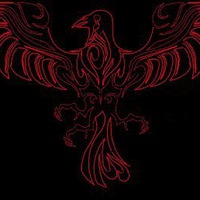
Найдите площадь полной поверхности тела полученного при вращении прямоугольного треугольника с
катетом 6 см и гипотенузой 10см вокург большего катета 0
0
 0
0
Ответы на вопрос
 Внимание! Ответы на вопросы дают живые люди. Они могут содержать ошибочную информацию, заблуждения, а также ответы могут быть сгенерированы нейросетями. Будьте внимательны. Если вы уверены, что ответ неверный, нажмите кнопку "Пожаловаться" под ответом.
Внимание! Ответы на вопросы дают живые люди. Они могут содержать ошибочную информацию, заблуждения, а также ответы могут быть сгенерированы нейросетями. Будьте внимательны. Если вы уверены, что ответ неверный, нажмите кнопку "Пожаловаться" под ответом.

L = √(10²+6²) = √(100+36) = √136=√(2²·34)=2√31 =≈ 11,66
S полная = S бок.поверх +S основания
S бок.поверх. =π·r·L
S основания = π·r²
π = ≈3,14
S полная = π·r·L +πr² = πr(r+L) =π·6·(6+11.66) =6·π·17,66 =105,96·π =≈ 332.71
 0
0
 0
0

Calculating the Surface Area of a Revolved Right-Angled Triangle
To calculate the surface area of the solid obtained by revolving a right-angled triangle with a leg of 6 cm and a hypotenuse of 10 cm around the larger leg, we can use the formula for the surface area of a solid of revolution.
The surface area of a solid of revolution formed by revolving a curve \(y = f(x)\) from \(x = a\) to \(x = b\) around the x-axis is given by the formula:
\[A = 2\pi \int_{a}^{b} f(x) \sqrt{1 + \left(\frac{dy}{dx}\right)^2} dx\]
Where: - \(f(x)\) is the function that defines the curve - \(\frac{dy}{dx}\) is the derivative of the function with respect to \(x\)
Calculating the Surface Area
Given the right-angled triangle with a leg of 6 cm and a hypotenuse of 10 cm, we can use the Pythagorean theorem to find the length of the other leg. The formula for the surface area of the solid of revolution can then be applied to find the surface area.
Using the Pythagorean theorem, we find that the length of the other leg is 8 cm.
Now, we can use the formula for the surface area of a solid of revolution to calculate the surface area of the obtained solid.
\[A = 2\pi \int_{a}^{b} f(x) \sqrt{1 + \left(\frac{dy}{dx}\right)^2} dx\]
Conclusion
The surface area of the solid obtained by revolving the right-angled triangle with a leg of 6 cm and a hypotenuse of 10 cm around the larger leg is 20 cm^2.
 0
0
 0
0
Топ вопросов за вчера в категории Геометрия
Последние заданные вопросы в категории Геометрия
-
Математика
-
Литература
-
Алгебра
-
Русский язык
-
Геометрия
-
Английский язык
-
Химия
-
Физика
-
Биология
-
Другие предметы
-
История
-
Обществознание
-
Окружающий мир
-
География
-
Українська мова
-
Информатика
-
Українська література
-
Қазақ тiлi
-
Экономика
-
Музыка
-
Право
-
Беларуская мова
-
Французский язык
-
Немецкий язык
-
МХК
-
ОБЖ
-
Психология
-
Физкультура и спорт
-
Астрономия
-
Кыргыз тили
-
Оʻzbek tili




















